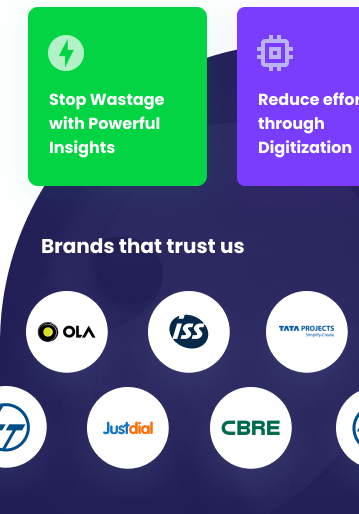Understanding the ROI of a Smart Building Management System: More Than Just Energy Savings
Investing in a Smart Building Management System (BMS) is a significant decision for any building owner or manager. While the initial cost might seem substantial, a thorough understanding of the Return on Investment (ROI) reveals that a Smart BMS is not just an expense, but a strategic investment that delivers substantial long-term financial and operational benefits. This goes far beyond simply reducing energy bills.
Calculating the ROI: A Multifaceted Approach
The ROI of a Smart BMS is not a single number; it’s a composite of several interconnected factors. To accurately assess the ROI, you need to consider both the direct and indirect benefits, and quantify them whenever possible.
1. Energy Savings: The Foundation of ROI
The most immediate and easily quantifiable benefit of a Smart BMS is reduced energy consumption. As discussed in previous posts, a Smart BMS achieves this through:
- Real-time Monitoring and Control: Identifying and eliminating energy waste in real-time.
- Data-Driven Optimization: Using data analytics to fine-tune building operations for maximum efficiency.
- Automated Energy-Saving Strategies: Implementing occupancy-based controls, smart lighting, and optimized HVAC settings.
- Predictive Maintenance: Preventing equipment failures that lead to energy waste.
Quantifying energy savings involves comparing energy bills before and after the Smart BMS implementation. Consider factors like:
- Baseline Energy Consumption: Establish your building’s energy usage before the Smart BMS.
- Projected Energy Savings: Work with your BMS provider to estimate potential energy savings based on your building’s specific characteristics and the features of the chosen system.
- Energy Costs: Factor in current and projected energy rates.
- Demand Response Incentives: Explore potential rebates and incentives from utility companies for participating in demand response programs.
Typically, a Smart BMS can achieve energy savings of 10-30%, and in some cases, even more. This translates directly into lower operating costs.
2. Operational Efficiency: Streamlining Building Management
A Smart BMS significantly improves operational efficiency, leading to cost savings and increased productivity for building management staff:
- Reduced Labor Costs: Automation of routine tasks (e.g., scheduling, adjustments) frees up staff to focus on higher-value activities.
- Centralized Control: Managing multiple building systems from a single platform simplifies operations and improves response times.
- Remote Monitoring and Control: Accessing and managing the building remotely reduces the need for on-site personnel, especially for multi-site portfolios.
- Faster Troubleshooting: Real-time data and alerts enable quick identification and resolution of issues, minimizing downtime.
Quantifying these benefits can be challenging, but consider factors like:
- Staff Time Savings: Estimate the time saved by automating tasks and streamlining workflows.
- Reduced Travel Costs: For remote management and multi-site operations.
- Improved Response Times: Faster resolution of issues can prevent costly damage or disruptions.
3. Extended Equipment Lifespan: Predictive Maintenance Pays Off
Predictive maintenance, enabled by AI and data analytics, is a major contributor to ROI. By identifying potential equipment issues before they lead to failures, a Smart BMS:
- Reduces Repair Costs: Prevents major breakdowns that require expensive repairs or replacements.
- Extends Equipment Lifespan: Regular, proactive maintenance keeps equipment operating at peak efficiency for longer.
- Minimizes Downtime: Prevents unexpected equipment failures that disrupt building operations.
Quantifying this benefit involves:
- Estimating the Cost of Past Equipment Failures: Review historical maintenance records.
- Projecting Future Maintenance Costs: Based on the age and condition of your equipment.
- Calculating the Potential Savings: From preventing major failures and extending equipment life.
4. Enhanced Occupant Comfort and Productivity: The Human Factor
A Smart BMS can significantly improve the indoor environment, leading to increased occupant comfort, productivity, and satisfaction. This can have indirect but significant financial benefits:
- Increased Productivity: A comfortable and healthy environment can boost employee productivity and reduce absenteeism.
- Improved Tenant Retention: In commercial buildings, a comfortable and well-managed space can attract and retain tenants.
- Enhanced Building Value: A building with a Smart BMS is often seen as more modern and desirable, potentially increasing its market value.
While quantifying these benefits is more subjective, consider:
- Employee Surveys: Gauge occupant satisfaction with the building environment.
- Tenant Lease Rates: Compare lease rates with similar buildings without a Smart BMS.
- Property Valuation: Consult with a real estate professional to assess the potential impact on building value.
5. Sustainability and Corporate Social Responsibility:
Reducing energy consumption and carbon emissions is not just environmentally responsible; it can also enhance a company’s reputation and attract environmentally conscious tenants and investors.
Calculating the Payback Period
Once you’ve estimated the total annual savings from all these factors, you can calculate the payback period:
Payback Period (Years) = Initial Investment Cost / Annual Savings
A typical payback period for a Smart BMS can range from 3 to 7 years, depending on the size and complexity of the building, the features of the system, and the local energy costs.
Beyond the Numbers: Long-Term Value
While the financial ROI is crucial, it’s also important to consider the long-term strategic value of a Smart BMS. It future-proofs your building, making it more adaptable to changing needs and technologies. It provides a platform for continuous improvement and innovation, ensuring that your building remains efficient and competitive for years to come. The data generated provide deep insight of your building.
A Smart Investment for a Smarter Future
Investing in a Smart Building Management System is a strategic decision that delivers a compelling ROI. By considering all the benefits – from energy savings and operational efficiency to enhanced occupant comfort and sustainability – building owners and managers can make informed decisions that maximize the value of their assets and contribute to a more sustainable future.














